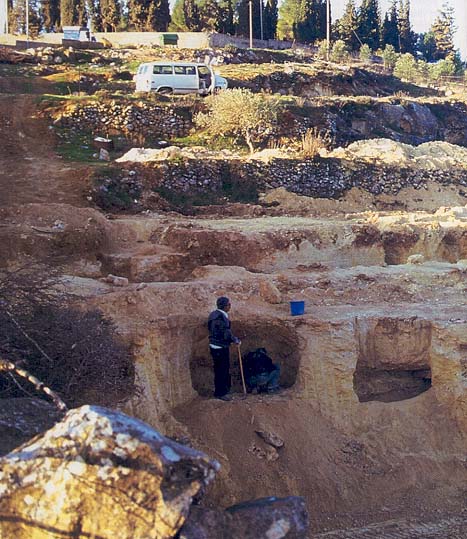Image Details

Abraham Graicer
Fifty unusual graves honeycomb the terraces of the southern side of the Repha’im Valley in Beit Safafa, a village in southwestern Jerusalem. Called shaft graves, the tombs consist of a 5- to 7-foot-deep vertical shaft with a horizontal burial niche dug out at the bottom. (The graves in the foreground are, from left, those identified as 122, 126 and 127 on the plan) Most contain the remains of only one skeleton, although a handful of the tombs contain two stacked head-to-toe. Dating from the first century B.C.E. to the first century C.E., the rough-cut Beit Safafa tombs have almost nothing in common with the elaborate family tombs typical of Jerusalem in this period.
One other place in Israel is known for its similar shaft graves: Qumran, the Judean Desert site frequently associated with the Essenes, an ascetic Jewish sect whose laws may be recorded in the Dead Sea Scrolls, which were found in nearby caves. In the accompanying article, author Boaz Zissu suggests that the Jerusalem shaft graves may be those of Jerusalem’s Essenes.
